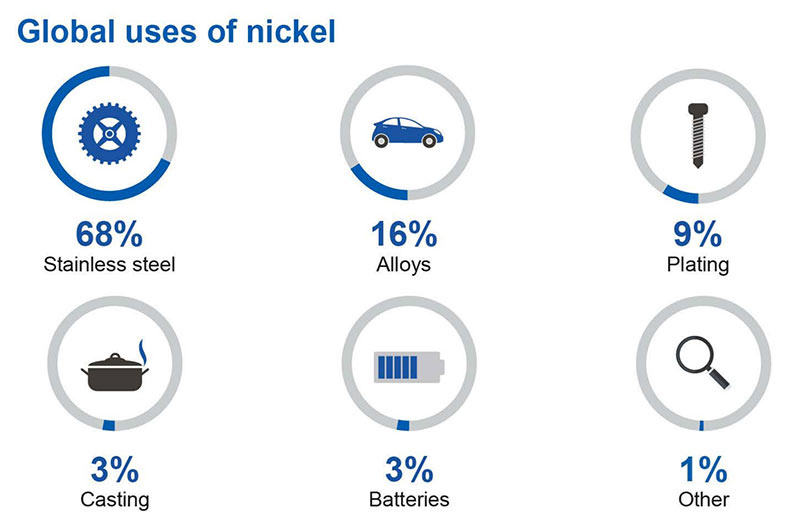EV manufacturers used 28pc more nickel per car in 2019, Adamas reports

Pic: Bloomberg Creative / Bloomberg Creative Photos via Getty Images
In 2019, 59,271 tonnes of nickel were used in passenger EV batteries — 39 per cent more than the previous year, according to Adamas Intelligence.
To be fair, these sorts of notable increases are coming from a low base. Overall, mined nickel output reached ~2.6 million tonnes in 2019, according to Australia’s Department of Industry, Innovation and Science’s Resources and Energy Quarterly December 2019.

That means at ~60,000tpa, the EV market — while growing — still represents too small a share of overall consumption (about 3 to 5 per cent) to make a dent in market fundamentals.
But going forward it will be important to split this +2.6 million tonnes output between class 1 and class 2 nickel supply. Class 1 (low impurity) nickel is ideal for batteries; class 2 is not.
More steel-based demand is shifting into class 2, Vivas Kumar, principal consultant at Benchmark Mineral Intelligence said last year. The market trends for battery versus steel will start to diverge as a result.
At the same time, the average amount of nickel per EV is increasing substantially.
In 2019, the average amount of nickel used in each EV increased by 28 per cent to 12.9kg, Adams Intelligence says.
That’s the average amount; Australian producer Independence Group (ASX:IGO) says there’s a massive +75kg of nickel in every 2019 Tesla Model S.
Adams says this overall increase is due to “a growing consumer preference for long-range BEVs with high-capacity batteries, coupled with an ongoing shift by automakers to battery chemistries containing higher concentrations of nickel”.
The large number of constantly moving factors make it hard to pin down a consensus demand outlook.
Fastmarkets estimates that 500,000 tonnes of refined nickel will be used annually in lithium-ion batteries for EVs by 2025.
CRU reckons the battery sectors use of primary nickel will reach 870,000 tonnes by 2030, and 1.5 million tonnes by 2040, while a July 2019 report from BNEF predicts demand will surge to 1.8 million tons of contained metal by 2030.
No one really knows what is going to happen going forward, but its probably safe to say that this ~60,000tpa/ 12.9kg per car figure is just the beginning.
READ: Check it out — Nickel explorers are up 32% over the past three months
Related Topics
UNLOCK INSIGHTS
Discover the untold stories of emerging ASX stocks.
Daily news and expert analysis, it's free to subscribe.
By proceeding, you confirm you understand that we handle personal information in accordance with our Privacy Policy.








